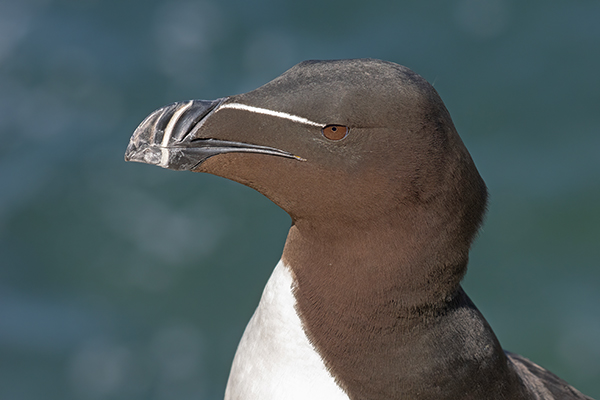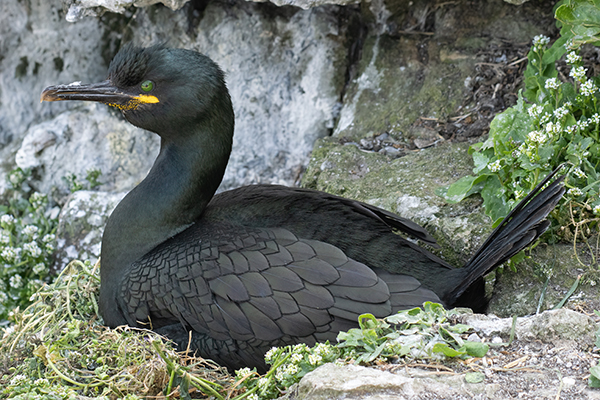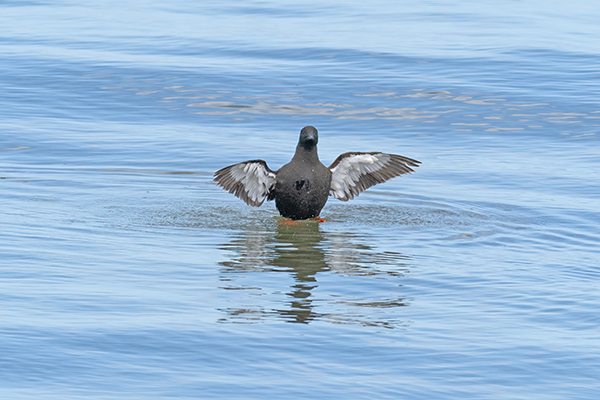Black-winged Kites are stunning little raptors about the same size as a Kestrel. In Europe, they're resident in southern Spain & found throughout Africa. They have recently been expanding their range northwards with regular sightings in France. Its long been mooted as a bird that'll turn up in the UK so when a 'probable' was reported on a post alongside the A14 in Suffolk from a moving car on the 16th April it wasn't a real surprise. There was no further sign of this bird until it, or another was photographed in rural mid Wales on the 18th April just an hour and a half away from home! Like a few others I traveled down and spent a few hours searching likely spots but the trail had gone cold and there was no further sign.
Roll forward to July 17th when it was found at Hickling Broad in Norfolk. Family commitments and a day at the open golf meant I couldn't get to see it until Thursday. Returning from a meal out after the golf I found Malc had been messaging and was thinking of travelling down over night to get to Norfolk at first light as the bird had been seen going to roost.
There was no point in trying to sleep as we were meeting at midnight and after an uneventful drive down to Stubb Mill we arrived just before 4 am to find it already getting light! We also met up with fellow Cheshire birder, John Gregory, who'd missed the bird the previous day, and had stayed overnight in Norfolk. It was a cool morning with quite a bit of mist so we wrapped up warm and set off for the short walk to the raptor view point where we were greeted by a fiery rising sun sun but poor visibility due to the mist. This was going to be an issue.
Several hours went with only a couple of Cranes and a Marsh Harrier to show for our patient waiting. Suddenly phones started pinging with the message on WhatsApp that the kite was visible from Horsey! With no sign of the mist lifting soon John, Malc & I decided to jump into Johns car and view from the Horsey side.
At this point I was wishing I hadn't so many warm layers on as the walk / run from the car park was probably 2 km - not fun in warm clothing carrying several kilos of optical equipment. Sweaty and breathless we arrived to a point where there were a few people looking through a gap in the hedge at the Black-winged Kite sat in a small bush with a Woodpigeon for company! Many thanks to the birders there who let us look through their scopes. Viewing was very limited and although it could be seen with binoculars only those at the front with a slightly higher elevation could get it in a telescope.
The photos above were taken through someones scope with my phone whilst the ones below were taken with my camera but have been massively cropped.
As the sun burnt off the mist the news came through that it could be seen from Stubb Mill but very distantly.
Suddenly the bird flew and we watched it fly away from us and out of sight. Unfortunately it flew across our path behind some trees several hundred metres away so the only flight shots I could manage were of it flying away from us.
Hoping we'd see the bird as it came of its roost early morning I'd promised Jan I'd try to be home in time to look after our youngest grandaughter for a couple of hours whilst she attended a school event with her four year old sister! I made it home twenty minutes before Jan had to leave, starving hungry and tired after being up for thirty four hours without sleep. I still managed to mow the lawns before falling asleep on the couch and eventually sleeping solidly for over nine hours in bed! A great bird and many thanks to Malc for taking his car.
Since we saw it the bird moved to Suffolk and is currently in Essex. It looks as if it's heading south and possibly looking to travel back to mainland Europe. Given the current weather I don't blame it!





















































































